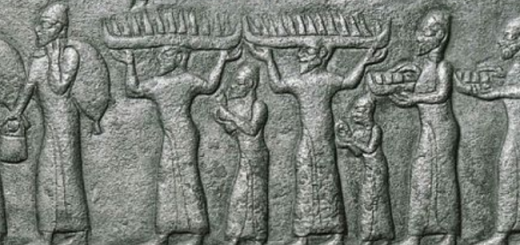Most Famous Phoenician Cities
The Phoenicians, an ancient Semitic-speaking civilization, flourished between 1500 BCE and 300 BCE in the region known today as Lebanon, along with parts of Syria and Israel.
Renowned for their seafaring skills, trade, and the spread of the alphabet, the Phoenicians established several influential and prosperous city-states along the Mediterranean coast. These cities, acting as important hubs for commerce, culture, and innovation, played pivotal roles in the ancient world.
Below, World History Edu takes a deep look into the most famous Phoenician cities, exploring their history, significance, and contributions to Mediterranean civilization.
Tyre
Tyre, situated on the southern coast of Lebanon, was one of the most powerful Phoenician city-states. Founded around 2750 BCE, it comprised two main parts: an island city and a corresponding mainland settlement. Tyre’s strategic location and superb port made it a crucial center for trade and the production of purple dye from the murex shellfish, a luxury item in the ancient world.
Tyre’s wealth and influence peaked during the first millennium BCE, with its maritime prowess enabling the city to establish colonies across the Mediterranean, including Carthage in North Africa. However, its prosperity also attracted the attention of various empires. Notably, the city endured a famous siege by the Babylonian king Nebuchadnezzar in the 6th century BCE and later by Alexander the Great in 332 BCE, who built a causeway to the island city, a feat that permanently connected Tyre to the mainland.

Image: A cluster of rugged islands off the western coast of the Tyre/Sour peninsula in Southern Lebanon.
Sidon
Sidon, another major Phoenician city, was located to the north of Tyre. Known for its skilled craftsmen, particularly in glass and purple dye production, Sidon was a significant cultural and trade center. The city’s artisans contributed to the spread of Phoenician craftsmanship throughout the Mediterranean.
Sidon experienced various periods of dominance and decline, influenced by the power struggles of neighboring empires. Despite being overshadowed by Tyre at times, Sidon maintained its importance due to its strategic location and harbors. The city was conquered by the Persians in the 6th century BCE and later by Alexander the Great, becoming part of the Hellenistic world.

Image: Sea castle located in the city of Sidon.
Byblos
Byblos is considered one of the oldest continuously inhabited cities in the world. Located north of Beirut, Byblos has a history that predates the Phoenician civilization, with archaeological evidence dating back to the Neolithic period. Byblos became a prominent Phoenician city due to its rich trade, particularly in the export of cedar wood and papyrus, linking it closely to the Egyptian civilization.
The city’s significance is further highlighted by its contribution to the development of the Phoenician alphabet, which greatly influenced the Greek alphabet and, subsequently, the writing systems of the Western world. Byblos was also known for its religious significance, with the worship of the god El and the goddess Baalat Gebal.

Image: Architectural view of the City of Byblos
Carthage
Although not located in the Phoenician heartland, Carthage, founded in the 9th century BCE in present-day Tunisia, became the most powerful Phoenician colony and eventually grew into a formidable city-state in its own right. Carthage’s strategic location allowed it to control trade routes in the Western Mediterranean, and it became renowned for its military might, particularly its navy.
Carthage’s expansion led to conflicts with several other powers, most notably the Roman Republic, culminating in the three Punic Wars. The city’s defeat in the Third Punic War (149-146 BCE) led to its destruction by Rome, marking the end of Carthaginian power but cementing its legacy in history.

Frequently asked questions about Phoenicia and its cities
The legacy of the Phoenicians, encapsulated in these cities, continues to be a subject of fascination and study, shedding light on the complexities and achievements of ancient civilizations. The ruins and archaeological sites of these once-great city-states serve as a testament to their historical significance and the enduring legacy of the Phoenicians in the tapestry of human history.
Below are some of the most asked questions about Phoenicia and its cities:
Who were the Phoenicians?
The Phoenicians were an ancient Semitic-speaking people who inhabited the coastal region of modern-day Lebanon, Syria, and northern Israel. They are renowned for their seafaring skills, trade networks across the Mediterranean, and the development of the Phoenician alphabet, which significantly influenced the writing systems of the Western world.
What is Phoenicia known for?
Phoenicia is best known for its maritime trade and craftsmanship, particularly in shipbuilding, glassmaking, and the production of purple dye from the murex shellfish. The Phoenicians were also instrumental in spreading the alphabet, which formed the basis of many modern writing systems.
What were the major Phoenician cities?
The major Phoenician cities included Tyre, Sidon, Byblos, and Carthage (a colony that became a powerful city-state in its own right). These cities were independent city-states that shared a common culture and language but often operated autonomously.
Why was Tyre important in Phoenician history?
Tyre was one of the most powerful Phoenician city-states, known for its strong maritime trade, skilled craftsmen, and the production of the highly valued purple dye. It also established numerous colonies, including Carthage, and played a significant role in the spread of Phoenician culture across the Mediterranean.
What led to the decline of Phoenician cities?
The decline of Phoenician cities was due to a combination of factors, including military conquests by powerful empires such as the Assyrians, Babylonians, Persians, and eventually the Greeks and Romans. Additionally, internal strife and competition between the city-states also contributed to their decline.
How did the Phoenicians contribute to the development of the alphabet?
The Phoenicians developed one of the earliest known alphabets, which consisted of a simple, phonetic system of 22 characters representing consonant sounds. This alphabet was easily adopted and adapted by other cultures, notably the Greeks, leading to the development of the alphabets used in much of the world today.
What was the relationship between Phoenicia and other ancient civilizations?
Phoenicia had extensive trade relations with many ancient civilizations, including the Egyptians, Greeks, and Romans. Through trade, the Phoenicians spread their culture, technology, and the alphabet, influencing the development of these civilizations.
How and Why did Carthage Fall? – The Destruction of Rome’s Fiercest Rival
How did Phoenician cities maintain their independence?
Phoenician cities maintained their independence through strategic alliances, maritime prowess, and economic strength. Their geographical location and fortified cities also provided defense against many invaders. However, their independence varied over time, with periods of autonomy interspersed with domination by larger empires.
What role did religion play in Phoenician society?
Religion played a central role in Phoenician society, with each city-state worshiping its own pantheon of gods and goddesses, although there were common deities such as Baal, Astarte, and Melqart. Religious practices included temple worship, sacrifices, and festivals, which were integral to Phoenician cultural identity.
Are there any Phoenician cities that exist today?
Many modern cities in Lebanon, such as Tyre, Sidon, and Byblos, are located on the sites of ancient Phoenician cities. These contemporary cities contain archaeological remains from their Phoenician past, including ruins, artifacts, and inscriptions, which attract scholars and tourists interested in ancient history.



























